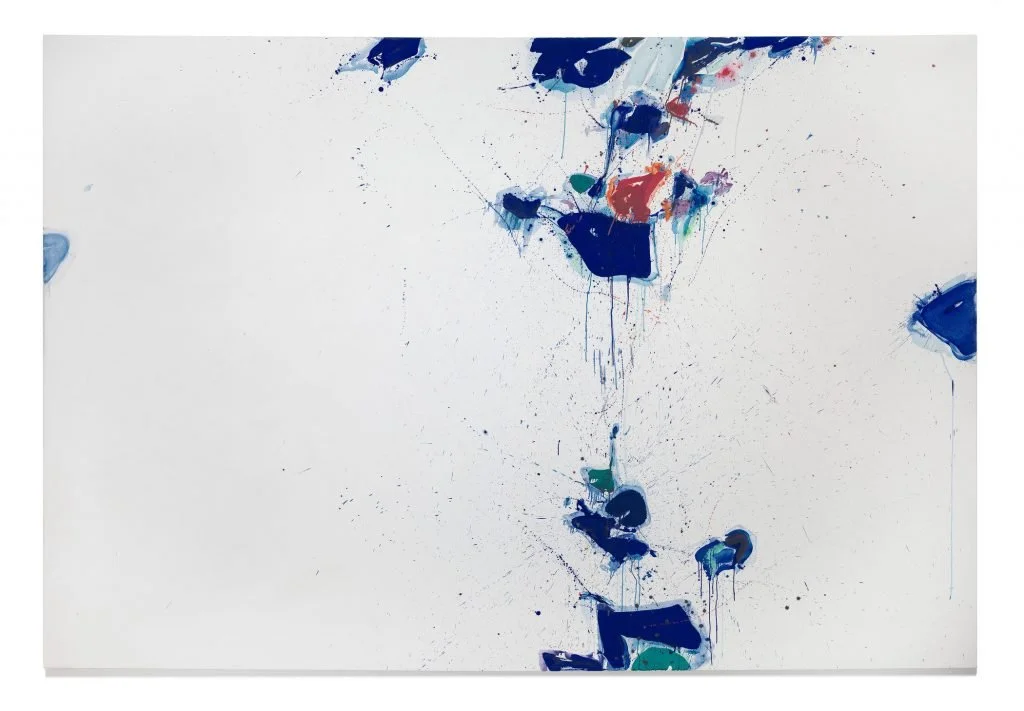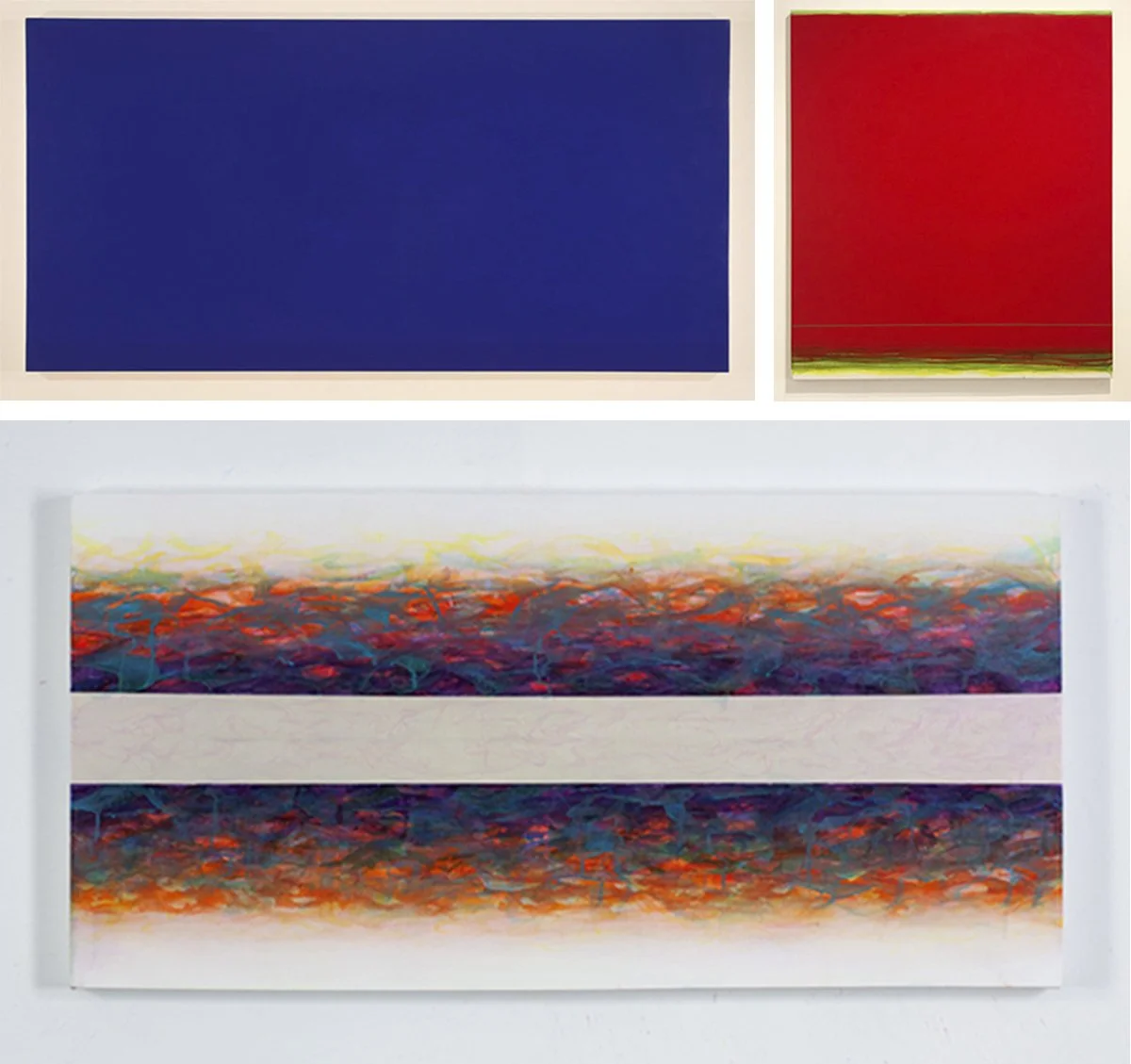“Confront the void”: Talking to Shingo Francis
Claudine Dixon, Curatorial Assistant, Prints and Drawings
As the exhibition Sam Francis and Japan: Emptiness Overflowing will soon be closing, I feel fortunate to have been able to spend some time recently in the galleries with the artist’s son Shingo Francis, an artist himself, to continue a discussion we had a few weeks ago via Zoom while Shingo was still at home in Japan. Our virtual conversation had focused on the wonder of color, primarily blue, and this follow-up conversation in person ricocheted among various topics of Shingo’s experience in becoming an artist and his reaction to seeing the works by his father and Japanese artists in the exhibition. What follows is a compilation of some observations and images touched upon in both conversations as we say goodbye to both this beautiful exhibition and to my colleague Leslie Jones, Curator, Prints and Drawings who—together with Hollis Goodall, Curator, Japanese Art at LACMA, and Richard Speer, independent scholar and curator—assembled such a remarkable group of works by Sam and others as one of her last projects here at LACMA.
Shingo Francis and Claudine Dixon in Sam Francis and Japan: Emptiness Overflowing at the Los Angeles County Museum of Art, photo © Museum Associates/LACMA by Debra Burchett-Lere
Sam Francis, Towards Disappearance, 1957–58, LACMA, Modern and Contemporary Art Council Fund, Los Angeles County Museum of Art, Modern and Contemporary Art Council Fund, © 2023 Sam Francis Foundation, California/Artists Rights Society (ARS), New York, photo © Museum Associates/LACMA
Sam Francis, Towards Disappearance, 1957–58, LACMA, Modern and Contemporary Art Council Fund, Los Angeles County Museum of Art, Modern and Contemporary Art Council Fund, © 2023 Sam Francis Foundation, California/Artists Rights Society (ARS), New York, photo © Museum Associates/LACMA
What is it about this blue in its primal opacity that attracts our eye? I asked Shingo how he perceives color and how it influences his own art. As a starting off point, I wanted to share a quote from his father that I found in Saturated Blue: Writings from the Notebooks (1995), published by The Lapis Press, Santa Monica, to help guide the conversation:
“Saturated Blue is the mother liquid, matrix / Stars always appear when the blue is fully saturated”
Shingo noted that “blue, along with red, are both primal colors. Whereby red encompasses energy and passion, blue is regarded as universal and instinctual.” Akin to a yin/yang or receptive/active dichotomy, blue is the color of rationality, while red is the color of emotions. Shingo added: “Both colors are often employed as a spatial element in art and they dominate in the paintings of the ‘color field’ artists,” works by modern masters such as Mark Rothko, Barnett Newman, and Clyfford Still. Shingo’s art can similarly highlight a color field expanse, cut across a monochromatic block of color with an intersecting line, or offset the background of a composition with a horizontal band of varying opaque and transparent colors. His application of color is dense and deep, layering distinct colors upon one another to create saturation and depth, which encourages the viewer to “look beyond the surface, pushing back at the idea of viewing art through a screen” (of preconceptions perhaps?) to become instead, as Shingo stated, “sensitized to engaging directly with the art itself.”
Shingo Francis, Blue’s Silence (still silence), 2007; Infinite Space (scarlet-yellow) 2018; Open Space II, 2010; all works © Shingo Francis


